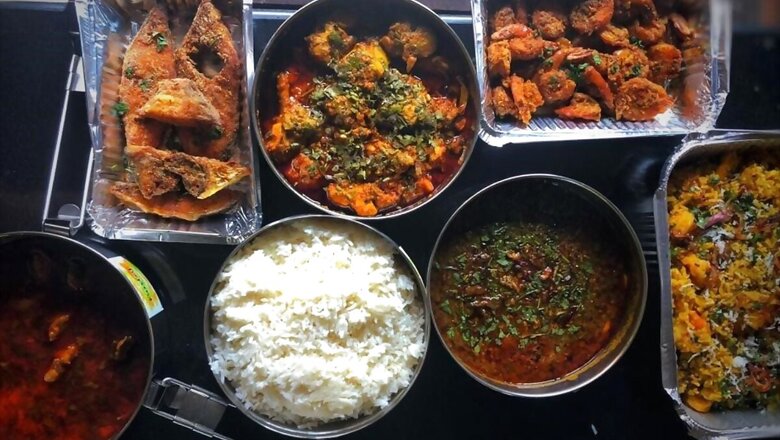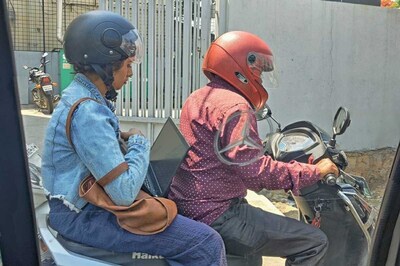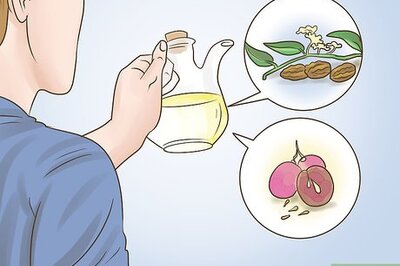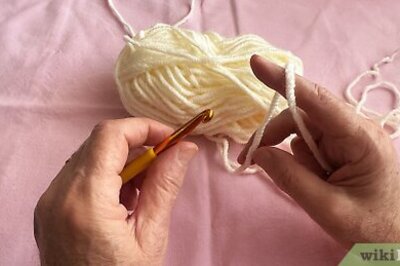
views
As some of you may have noticed, I am back from a whirlwind eating jamboree in Maharashtra. I whizzed through the Konkan Coast, eating my heart away, gorging on seafood in Malwan, and Vengurla. I was also in Nasik, in northern Maharashtra, and then Nagpur and later Amravati eating bold robust meals, all from the same state but distinctly different from each other.
But I am from Mumbai, and there are some little-known cuisines that originated from these old islands that are so different from those cuisines that Maharashtra is so famous for. Food of those ethnic communities of Mumbai or Bombay as it was called.
There is, of course, the East Indian Christian Community, large landowners of several villages in Bandra, who originally hailed from Bassein, or as we know it now, Vasai. They have a distinctive cuisine of their own. The Kolis, a traditional fishing community that has lived along the coast of Mumbai for centuries and known for their unique culture, cuisine, and way of life. The Pathare Prabhus community of Marathi speaking people again primarily based in of Mumbai, known for their wealth, rich cultural heritage and extravagant cuisine. The Chandraseniya Kayasth Prabhus (CKP) known for their emphasis on seafood, and the Somvanshiya Kshatriya Pathare (SKP), of whom, very little has been known or popularised.
As I said, the Somvanshiya Kshatriya Pathare (SKP) are the original inhabitants of Mumbai, and you can recognise some of their surnames like Worlikar, Dadarkar, Vasaikar, Thanekar, Parelkar and even Goregaonkar, because they’ve been named after various parts of the city. The Somvanshiya Kshatriya Pathare (SKP) are also referred to as Pachkalshi and have a unique cuisine, which is so Maharashtrian, but so unlike Malwani, Varhadi, or Kolhapuri food. It is a simple, flavourful and wholesome, cuisine, which often calls for a lot of tomato and onion, with tamarind and uses little oil. Unlike Malwani, and Saraswat cooking, the SKP cuisine rarely demands the perpetual use of coconut where it is selectively used in curries (also known as Kalwan). The main flavour, the character and the identity comes from their own spice mixture called Pachkalshi Masala.
The cuisine is a medley of meats, fish and vegetables with a bias towards seafood and fish. Curiously, the community also has a soft corner for Raitas and Koshimbirs (salads), which play a vital role in this cuisine and are eaten with nearly every meal to not only complement, but to also balance the spices of the main course.
For example, Suranacha Raita, a salad of sorts made with Suran (Yam) cut into small cubes and deep fried. Then acidulated with lime-juice and garnished with finely chopped onion, grated coconut and coriander. When in season, this community delights in the slightly complex Ambyacha Raita (mango raita). Mango pulp is heated in a heavy bottom pan, to this, freshly chopped mangoes and a finely ground paste of coconut and mustard seeds are added. This is cooked on low heat and then seasoned with jaggery, salt and sugar and brought to a boil.
The SKPs also love dried fish and shrimp. And this umami filled ingredient is used in a lot of their dishes especially in koshimbirs (salads) and chutneys. Like the Sukat Chutney, which is made with dried shrimp, coconut, and masalas or Bombil Pickle, made with dried Bombay duck. But my favourite is the Javlyachi Koshimbir. Jhavala is very small dried shrimp, which is roasted on a pan without oil, till crisp. To the shrimp is added grated coconut, chopped onions and red chilli powder, and simply garnished with coriander.
I was in Alibaug with some friends a few days ago, and after ordering from some of the more famous Malvani restaurants and takeaways in those towns, decided that I wanted some home-style Maharashtrian food and decided to order from a place called Paisley Kitchen. Run by a wonderful lady called Naina Goregaonkar, a thoroughbred SKP, Naina comes from a very old family of Mumbai. The Goregaonkar family once owned hald of Bombay and also ran shacks and an open-air restaurant called Sea-View on Juhu Beach. I have many childhood memories of the Goan food served there. They also own Prabhat Poultry one of the oldest cold storage shops at Shivaji Park. Naina sent me a tiffin box full of simple homestyle SKP food. Chicken Sukka (chicken cooked in onion and tomato, with spices and tonnes of coriander) Chicken Kalwan (medium pieces of chicken in thin gravy heavy flavoured with garlic and spices), Crisply fried prawns and pomfret, marinated in Pachkalshi spices, Prawn Pulao or (Kolambichi Khichadi) delicately flavoured masala rice with medium sized prawns. This was served with steamed rice, bhakris and rice flour crepes, similar to Amboli or Neer Dosas called Ghavane.
Having lived in Mumbai all my life, a city which is such a melting pot of people and cuisines, one tends to neglect the food that is so inherent to the city. The way to preserve a traditional cuisine is to share it with others and to talk about it, and actually cook it and eat it. That is the only way, we can preserve this culinary connection to the past.
Kunal Vijayakar is a food writer based in Mumbai. He tweets @kunalvijayakar and can be followed on Instagram @kunalvijayakar. His YouTube channel is called Khaane Mein Kya Hai. The views expressed in this article are those of the author and do not represent the stand of this publication.
Read all the Latest Lifestyle News here

















Comments
0 comment